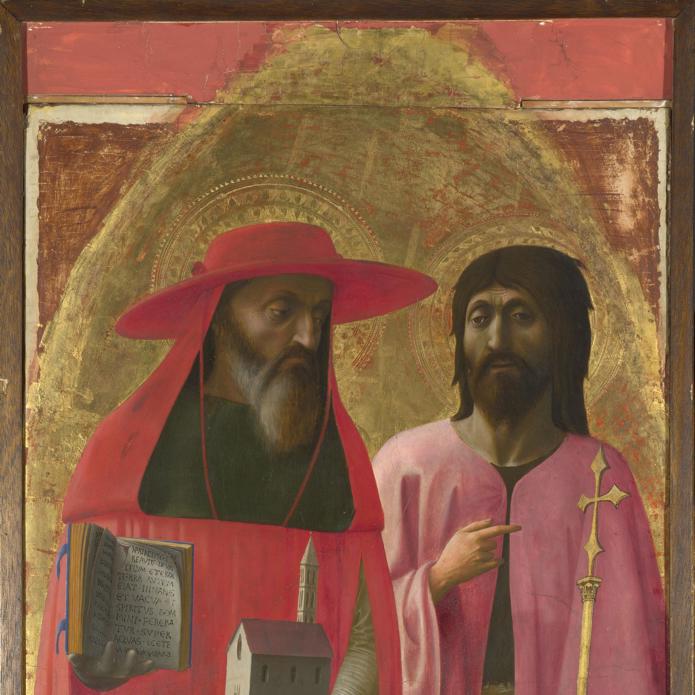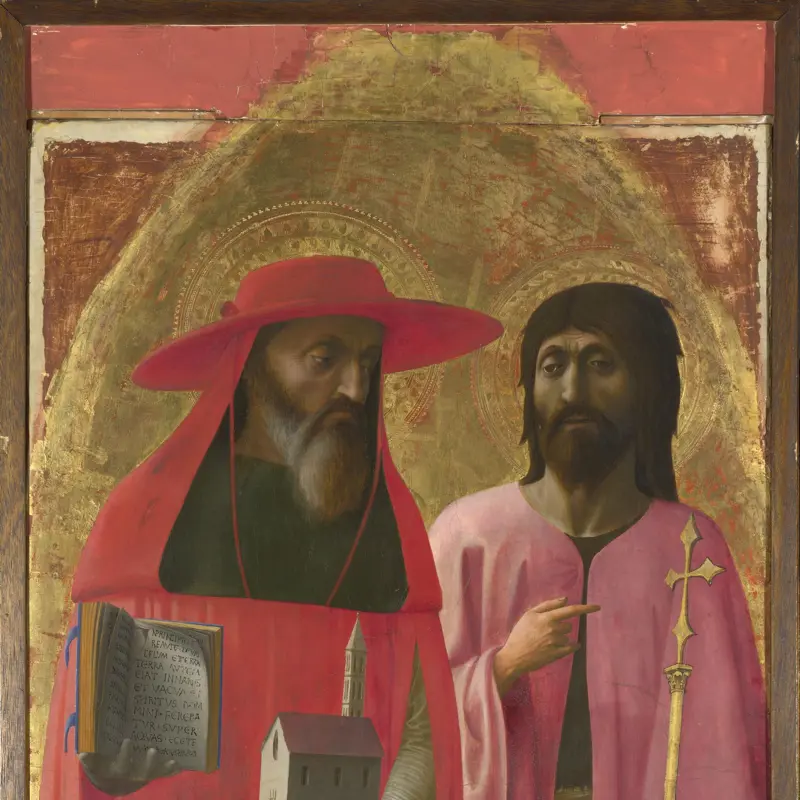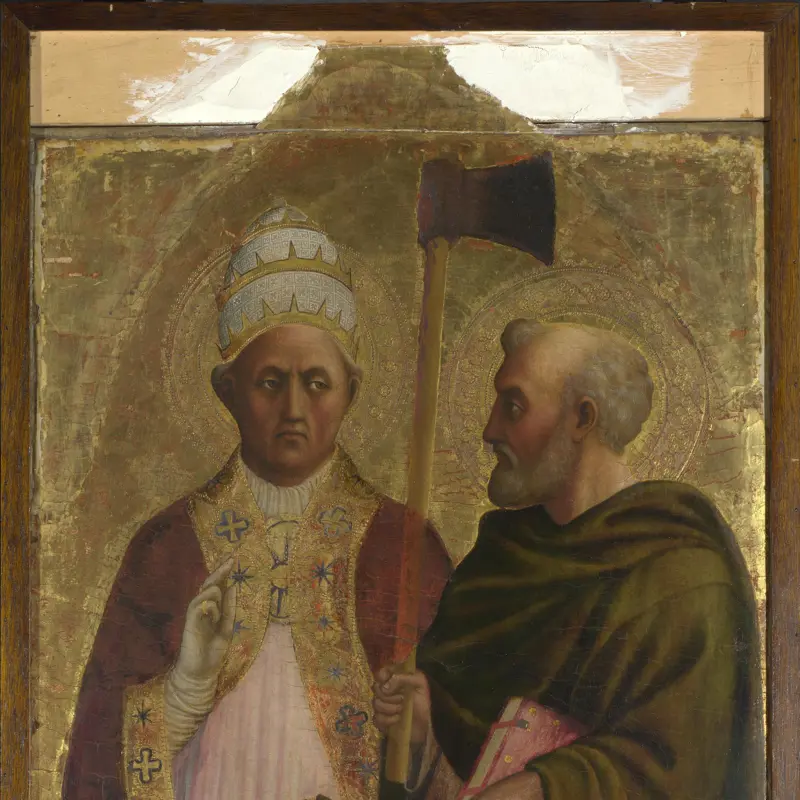Masolino, 'A Pope (Saint Gregory?) and Saint Matthias', about 1428-9
About the work
Overview
Saint Matthias holds the axe that was used to chop his head in half. He was not widely worshipped but he was an important saint for the church of Santa Maria Maggiore, Rome, where this panel formed part of an altarpiece: his relics were buried there, and he was depicted in a mosaic in the east end of the church.
To his left is the pope, Saint Gregory the Great, wearing the papal tiara – three layers of gold crowns. According to legend, Gregory made a procession to Santa Maria Maggiore in 590 to ask for the Virgin’s help when the city was struck by a plague. Another story tells how one Easter, when he was celebrating Mass at the church, a great chorus of angels appeared miraculously around him. Pope Martin V, who may have commissioned this altarpiece, was particularly devoted to Saint Gregory and may have specified his inclusion.
Key facts
Details
- Full title
- A Pope (Saint Gregory?) and Saint Matthias
- Artist
- Masolino
- Artist dates
- About 1383 - about 1436
- Part of the series
- Santa Maria Maggiore Altarpiece
- Date made
- About 1428-9
- Medium and support
- Oil and egg tempera, originally on wood (poplar, identified), transferred to paper-fibre based board
- Dimensions
- 126.3 × 59.1 cm
- Acquisition credit
- Bought with a contribution from the Art Fund, 1950
- Inventory number
- NG5963
- Location
- Room 57
- Collection
- Main Collection
- Frame
- 20th-century Replica Frame
Provenance
Additional information
Text extracted from the ‘Provenance’ section of the catalogue entry in Dillian Gordon, ‘National Gallery Catalogues: The Fifteenth Century Italian Paintings’, vol. 1, London 2003; for further information, see the full catalogue entry.
Bibliography
-
1951Davies, Martin, National Gallery Catalogues: The Earlier Italian Schools, London 1951
-
1955The National Gallery, The National Gallery: 1938-1954, London 1955
-
1986Davies, Martin, National Gallery Catalogues: The Earlier Italian Schools, revised edn, London 1986
-
2001
C. Baker and T. Henry, The National Gallery: Complete Illustrated Catalogue, London 2001
-
2003Gordon, Dillian, National Gallery Catalogues: The Fifteenth Century Italian Paintings, 1, London 2003
Frame
This is a twentieth-century replica frame, probably made at the Gallery. Crafted from pinewood, it features a partially ebonised Roman-style moulding with a gilded reel on the outward-curved top moulding. It is fitted with a gilt Gothic arched slip frame. The inner mouldings and spandrels have a craquelure finish, and are water-gilded to match the gilding on Masolino’s A Pope (Saint Gregory?) and Saint Matthias.
This is one of two panels, framed as a pair, which were originally part of a double-sided triptych from the basilica of Santa Maria Maggiore in Rome.
About this record
If you know more about this work or have spotted an error, please contact us. Please note that exhibition histories are listed from 2009 onwards. Bibliographies may not be complete; more comprehensive information is available in the National Gallery Library.
Images
About the series: Santa Maria Maggiore Altarpiece

Overview
The Florentine painters Masaccio and Masolino often collaborated on large-scale projects. These panels come from a double-sided altarpiece made for the church of Santa Maria Maggiore in Rome. It was placed in the canon’s choir and probably commissioned by the wealthy and notable Colonna family.
One side would have been visible to only the canons – the clergymen connected specifically to the church and bound by its rules – who worshipped in this chapel and the other side to all who prayed in the church. The chapel was dedicated to Saint John the Baptist which explains his presence with Saint Jerome on the panel by Masaccio, Saints Jerome and John the Baptist. The painting by Masolino, A Pope (Saint Gregory?) and Saint Matthias, was once on the other side of the same panel. Masolino completed the altarpiece after Masaccio died in Rome of the plague in 1428/9.


